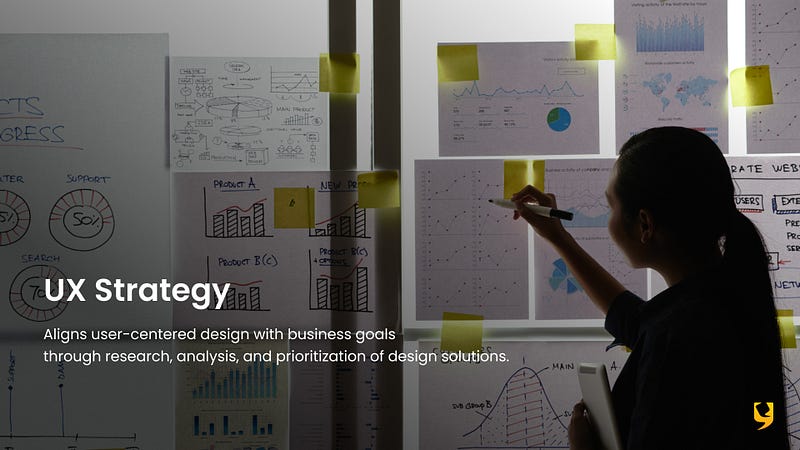Designing Responsibly: Sustainable UX Practices for Connected Experiences
Imagine using your preferred social media app to scroll through the interesting information and simple navigation. Have you ever given any thought to the energy needed to run the servers that make that stuff available at your fingertips? A recent analysis predicts that by 2030, the energy used by data centres worldwide would have tripled, matching that of the aviation sector (source: New York Times). For something we frequently take for granted, that leaves an astonishing environmental legacy.

Imagine getting the newest smartphone model and admiring its modern features and beautiful look. But did you know that one of the fastest-growing waste streams globally is electronic garbage, or “e-waste”? Millions of outdated devices wind up in landfills every year, where they leach toxic materials.chemicals that are damaging to the environment. According to the United Nations Global E-waste Monitor, just a small percentage of this e-waste is really recycled properly.
These illustrations emphasise the need of using sustainable UX techniques and design-oriented concepts while creating connected experiences. The goal of sustainable UX design is to provide top-notch user experiences while using as little energy, resources, and e-waste as possible. It involves developing digital goods and services that not only satisfy consumer requirements but also work towards a future that is greener and more sustainable.
The world of sustainable UX design will be explored in this blog, along with the measures that can be taken to design responsibly and the effects that our design thinking concepts have on the environment. We’ll examine the effects of unsustainable UX design empathy on the environment and learn about user-centered sustainable design techniques.
Understanding Sustainable UX Design and Its Importance in Connected Experiences
Sustainable UX design takes the environment into account throughout the whole life cycle of digital products and services, from conception to disposal. It includes a number of guidelines and practises that work to reduce the amount of resources used, energy used, and electronic trash produced while also encouraging user behaviour that supports sustainability.
On the other hand, connected experiences refer to user interactions with digital goods or services across many platforms and devices. Websites, mobile applications, Internet of Things (IoT) devices, and other linked technologies can all be included in these experiences. Given that these connected experiences frequently rely on power-hungry servers, data centres, and network infrastructures, it is imperative to take the environment into consideration.
The Environmental Impact of UX Design
Understanding how UX design affects the environment is crucial for ethical design. A useful tool for assessing the environmental impact of digital products is life cycle assessment (LCA). It evaluates a number of phases, including the gathering of raw materials, production, shipping, consumption of the product, and end-of-life disposal. Designers can pinpoint significant areas of influence, such as energy use, resource utilisation, and e-waste generation, by including LCAs as part of design thinking concepts.
Unsustainable UX design practises have negative effects on the environment, including accelerating global warming and expanding ecological footprints. For instance, a Stanford University research found that the carbon footprint of the typical website increased by 2.6% annually, with data transfer being the main cause (source: Stanford University). Unsustainable behaviour also increases the production of e-waste, with just 17.4% of electronic waste being recycled globally (source: Global E-waste Monitor 2020).
Embracing Sustainable Design with a User-Centered Approach
The use of user-centered sustainable design principles is essential to address the environmental effect of UX design. Consider the following important design thinking principles:
Designing for efficiency: By putting design thinking concepts to use, we can maximise how we use resources and energy. For instance, create interfaces with simple aesthetics and employ computation-light techniques.
Studies show that utilising efficient coding and optimising image sizes can cut energy use by up to 50% (source: SustainableUX).
Considering durable design, repairability, and upgradeability to extend the lifecycle of digital devices can significantly contribute to design thinking empathy in the reduction of e-waste.
Companies like Fairphone have developed modular cellphones that enable users to replace individual components, decreasing e-waste and increasing the device’s functional life, by incorporating design thinking into product development.
Getting rid of digital clutter: Research shows that a cluttered user interface makes decisions more difficult and frustrating, which increases energy use (source: Nielsen Norman Group). Users can browse more effectively and consume less energy by streamlining interfaces.
Encouragement of eco-conscious user behaviour: Inform users of sustainable practises and offer them feedback. In standby mode, video game consoles can waste up to 44% of their energy. By giving children tokens for each hour their consoles are disconnected, the Time Machine project attempts to address this problem. You can trade these tokens for more game time. This strategy instructs children about standby power consumption while encouraging responsible behavior.
Crafting Sustainable UX Design Solutions
In conclusion, incorporating effective UX design thinking principles gives us the power to develop digital products and services that are not only user-friendly but also environmentally sustainable.
Together, let’s create a digital ecosystem that harmonizes user needs with a commitment to a greener future. Take action now and design responsibly for a better and greener tomorrow with YUJ Designs- a leading UX design company in India and the USA!
Get in touch with us, today!
.webp)


Comments
Post a Comment